Arrival in Langogne on the Stevenson Trail |
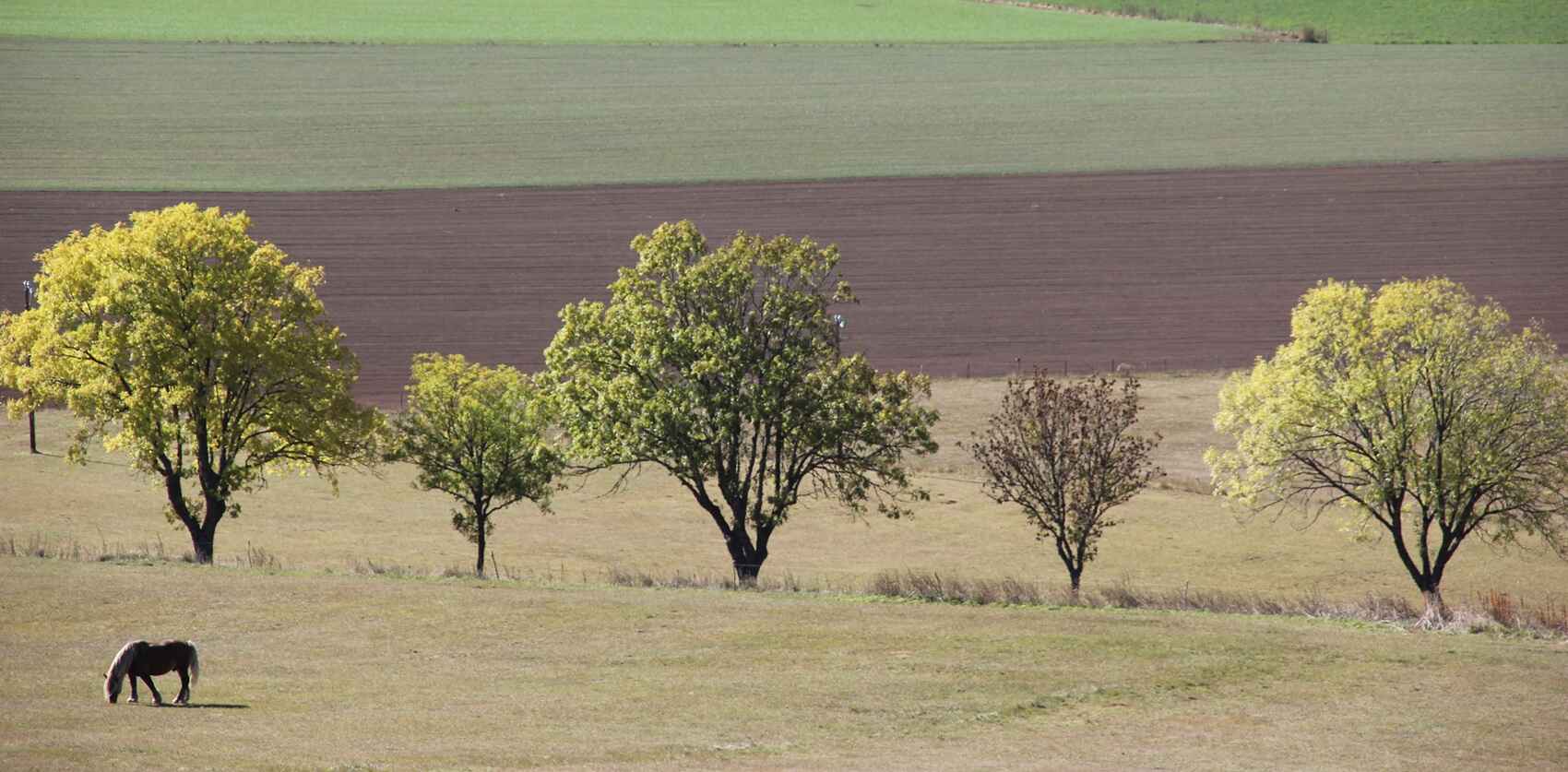
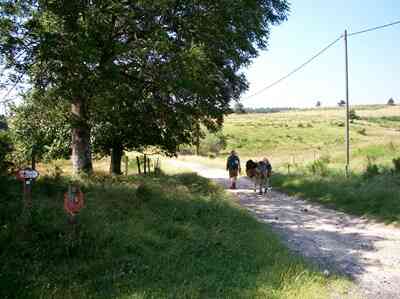 As we leave Pradelles, we descend towards the valley of the Allier and the Langouyrou. Below, the clarity of the early afternoon reveals Langogne, the capital of Gévaudan. No need for a compass or a military map, just slide straight towards the destination. We hesitate between the road and the winding paths on the side, but Noée makes her choice. She refuses to share space with the roaring cars. Higher up, on the slopes where cars crowd, conifers serve as meager vegetation. A few needleless fir trees stand tall, stretching their multiple arms, seemingly chasing away any ferocious beasts - Stevenson’s spelling regarding the wolf or the monster. So we follow the river.
As we leave Pradelles, we descend towards the valley of the Allier and the Langouyrou. Below, the clarity of the early afternoon reveals Langogne, the capital of Gévaudan. No need for a compass or a military map, just slide straight towards the destination. We hesitate between the road and the winding paths on the side, but Noée makes her choice. She refuses to share space with the roaring cars. Higher up, on the slopes where cars crowd, conifers serve as meager vegetation. A few needleless fir trees stand tall, stretching their multiple arms, seemingly chasing away any ferocious beasts - Stevenson’s spelling regarding the wolf or the monster. So we follow the river.
After the bloodbath, a bath of sunshine greets our escapade. One leg hurts, may it go to hell. The long journey becomes a long "cors." Brave path where dead ends do not exist. Light mood despite the pains. The stream murmurs like a woodland and sybaritic bell. When walking, are we clearing or deciphering?..
About wasteland and figures. It was after World War II that Roger Beaumont and his wife Mireille imagined marking France by painting it red and white. At that time, there were one hundred and fifty kilometers of recorded paths, mainly along the Loire. This calm and amiable couple would mark fifteen thousand kilometers of wild paths at their own pace over almost a lifetime. These are the famous GRs, long-distance hiking trails.
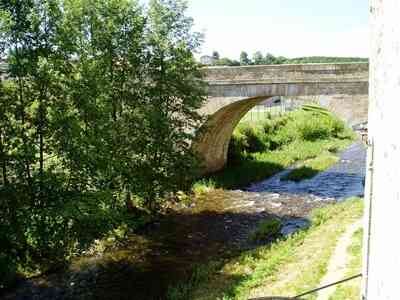 Corsica on foot - the famous GR®20, the toughest of them all, the Alps and the Tour of Mont Blanc, Chamonix-Menton, the Pyrenees, from the Atlantic to the Mediterranean. Since then, other good wills have taken over, other loving couples, and forty thousand kilometers of path are now offered to those wishing to discover safe havens away from frantic rhythms. A cordial salute to these two frenzied dreamers, Arthur and Zoé, on rocky paths. This afternoon, autumn smells good and the last rays are tanning my neck and scalp.
Corsica on foot - the famous GR®20, the toughest of them all, the Alps and the Tour of Mont Blanc, Chamonix-Menton, the Pyrenees, from the Atlantic to the Mediterranean. Since then, other good wills have taken over, other loving couples, and forty thousand kilometers of path are now offered to those wishing to discover safe havens away from frantic rhythms. A cordial salute to these two frenzied dreamers, Arthur and Zoé, on rocky paths. This afternoon, autumn smells good and the last rays are tanning my neck and scalp.
I forget my obligations, I am an origami, a wild duck, a little paper boat, a wanderer approaching Langogne. In a few minutes, my river will flow into the Allier and only the memory of a sunny and simple drift will remain.
In the heart of Gévaudan
First sounds of civilization as we approach the city. It’s the entrance to Lozère. On the bridge, a fuel truck, with the beast of Gévaudan painted on the tank, informs us of our direction. That’s the only one… The roadway now belongs to the motorists who honk vehemently. One of them yells: "Get lost!" The old bridge crossed by Stevenson no longer exists. Here, he met an insolent young girl. Today, the badly raised little girl would quickly be run over by the rolling idiots. For a century, the stones have given way to asphalt and its bad manners. Upon our arrival, there is no female presence. Since the beginning of the journey, we have hardly crossed any female gaze. Here and elsewhere, the handsome maidens must have been devoured by the famous beast...
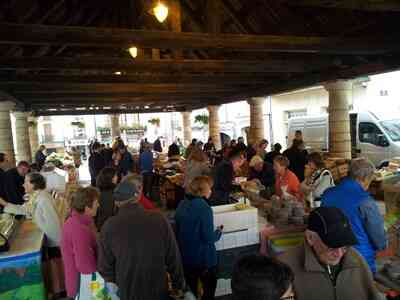 In front of the 18th-century hall - the pride of the city due to its "historical classification" - we fill our bags for the evening supper. We haven't touched the morning cheese and pair it with a small basket of fine charcuterie. The grumpy butcher sells his wares reluctantly. Impossible to extract the slightest address from him. Sausage merchant, not a tourist office. He grumbles. Despite its architectural qualities, Langogne hardly retains its guests. In the dull hollow, the population grumbles for no reason. The city leaves the office and hurries, it’s time for slippers and soup.
In front of the 18th-century hall - the pride of the city due to its "historical classification" - we fill our bags for the evening supper. We haven't touched the morning cheese and pair it with a small basket of fine charcuterie. The grumpy butcher sells his wares reluctantly. Impossible to extract the slightest address from him. Sausage merchant, not a tourist office. He grumbles. Despite its architectural qualities, Langogne hardly retains its guests. In the dull hollow, the population grumbles for no reason. The city leaves the office and hurries, it’s time for slippers and soup.
Drifting through the center in search of the "Exit" sign. At the central cinema, like everywhere, American films are screened. Flashy posters, giant guns, and names of actors in large format. Under the posters, young people ride their mopeds. Everyone shares their opinions. I hate the actors. That’s the title of a movie. Like elsewhere, farmers have made way for pressed executives. The 19th-century city described at the entrance of the town on shiny panels is far away.
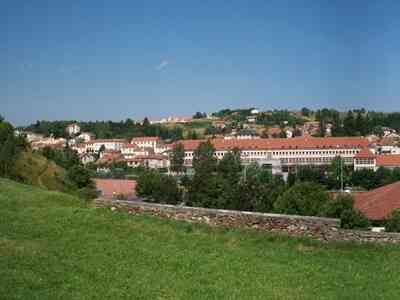 Until the industrial revolution, Langogne was a prosperous city. Cattle and sheep were raised here. People lived - and still live - from farming. At the time of industrialization, the struggle was tough, then unequal with the South, Nîmes, Alès. Gradually, commercial activities and large livestock fairs became nothing but a memory. The mines closed, and Langogne clung to its meager revenues.
Until the industrial revolution, Langogne was a prosperous city. Cattle and sheep were raised here. People lived - and still live - from farming. At the time of industrialization, the struggle was tough, then unequal with the South, Nîmes, Alès. Gradually, commercial activities and large livestock fairs became nothing but a memory. The mines closed, and Langogne clung to its meager revenues.
Today, we live from tourism, and the aborted industrial revolution has done a lot of good to nature, to its trees, and to its rivers. Here, the pollution rate is tiny, almost non-existent. The waters are clear, Noée, who has tasted them, attests to that. The summer season has passed, we are the last transhumants, and no one wants to inform us. We are not held back. Tonight, we will sleep in the grass counting the clouds...
Before fleeing, I buy The Beast of Gévaudan, a great enigma of History, by Abbot Félix Buffière. A long time in the bookstore. The Red Inn and its reports stretch over several meters. The bookseller promotes the book, I hesitate. To scare myself tonight in the forest, by the light of a flashlight. Like when we were children and enjoyed evoking horror... In The Owl Bible, tales and legends from the time when winters were harsh, Henri Gougaud provides a savory version of the bloody inn. In "The Inn of the Watch," it’s "a disheveled and filthy ogress who murders, aided by her two sons as mangy as Devil’s cats."
I hardly thought about it in Pradelles while listening to the hunchback, but now the story comes back to me. And also other tales. "The ghost wolves of Cronthal" and "The seven witches." I set my bag down and settle by the fire, with the scent of cinnamon and mulled wine in my nostrils. Between Gévaudan and Carpathians. It’s the tales and crazy stories that made me lose my reason. I read them alone, and Transylvania was for a long time the secret place where I took refuge. There, I was left in peace. by Eric Poindron, excerpt from "Beautiful Stars" With Stevenson in the Cévennes, Gulliver collection, directed by Michel Le Bris, Flammarion.
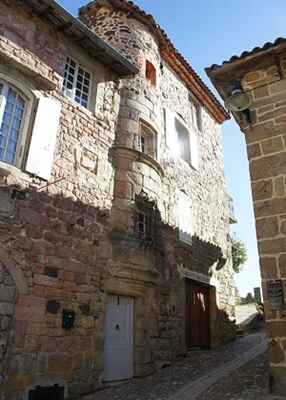 The mountain shepherd and the hikers
The mountain shepherd and the hikers
In a small hamlet between Pradelles and Langogne lived a young man named Lucien. He was the guardian of the cows on the family farm, a role he embraced with passion and dedication. Every morning, before the sun rose, Lucien left the old stone cottage. With his shepherd's staff in hand, he called the cows with a gentle voice, and they gathered around him. His dog, Gaston, guided them to the lush pastures, where the grass was soft and the streams whispered ancient secrets. Lucien loved these solitary moments with the cows. He told them stories, as if he could read their peaceful gazes. He spoke to them of the stars, the seasons that followed one another, and the hikers who walked the Stevenson path. The cows seemed to listen intently, their large brown eyes reflecting the wisdom of the mountains.
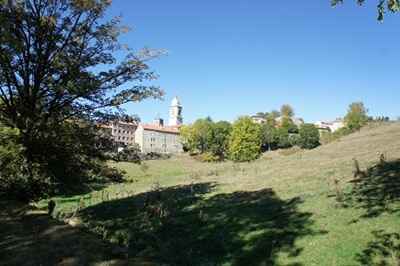 One day, as Lucien was guiding the cows to a sunny meadow, he spotted silhouettes in the distance. Hikers, loaded with backpacks and walking sticks, were following the Stevenson path. They looked tired but happy, their faces illuminated by the beauty of the landscapes. Lucien greeted them warmly. "Hello!" he said. "You are following the Stevenson path, right?" The hikers nodded. One of them, a woman with graying hair, smiled. "Yes, we’ve been walking for days, through the mountains and valleys. It’s beautiful here!" Lucien nodded. "The cows also love these hills," he said. "They know every path, every nook. They are the guardians of the secrets of these mountains." The hikers laughed. "And you, young man, what is your secret?" asked a bearded man. Lucien hesitated, then smiled. "My secret is that I talk to the cows," he said. "They tell me stories, and I listen to them. Together, we watch over these lands."
One day, as Lucien was guiding the cows to a sunny meadow, he spotted silhouettes in the distance. Hikers, loaded with backpacks and walking sticks, were following the Stevenson path. They looked tired but happy, their faces illuminated by the beauty of the landscapes. Lucien greeted them warmly. "Hello!" he said. "You are following the Stevenson path, right?" The hikers nodded. One of them, a woman with graying hair, smiled. "Yes, we’ve been walking for days, through the mountains and valleys. It’s beautiful here!" Lucien nodded. "The cows also love these hills," he said. "They know every path, every nook. They are the guardians of the secrets of these mountains." The hikers laughed. "And you, young man, what is your secret?" asked a bearded man. Lucien hesitated, then smiled. "My secret is that I talk to the cows," he said. "They tell me stories, and I listen to them. Together, we watch over these lands."
The hikers exchanged knowing glances. "Then tell us a story," said the woman with graying hair. And Lucien began to tell. He spoke of the stars that watched over the shepherds at night, of the legends of the ancients, and of the Beast of Gévaudan that once haunted these mountains. The hikers listened, captivated, while the cows grazed peacefully. From that day on, Lucien became the storyteller of the mountains. Hikers often stopped by his farm to hear his tales and share a meal. And the cows seemed to approve, their bells ringing in harmony with the young shepherd's stories. And thus, between the footsteps of the hikers and the benevolent gazes of the cows, Lucien found his place in these majestic landscapes of Haute-Loire towards Lozère, where legends intertwined with reality.This is how young Lucien, keeper of the cows and storyteller of the mountains, wove links between the hikers of the Stevenson path and the ancestral secrets of the Lozère mountains.
Former holiday hotel with a garden along the Allier, L'Etoile Guest House is located in La Bastide-Puylaurent between Lozere, Ardeche, and the Cevennes in the mountains of Southern France. At the crossroads of GR®7, GR®70 Stevenson Path, GR®72, GR®700 Regordane Way, GR®470 Allier River springs and gorges, GRP® Cevenol, Ardechoise Mountains, Margeride. Numerous loop trails for hiking and one-day biking excursions. Ideal for a relaxing and hiking getaway.
Copyright©etoile.fr